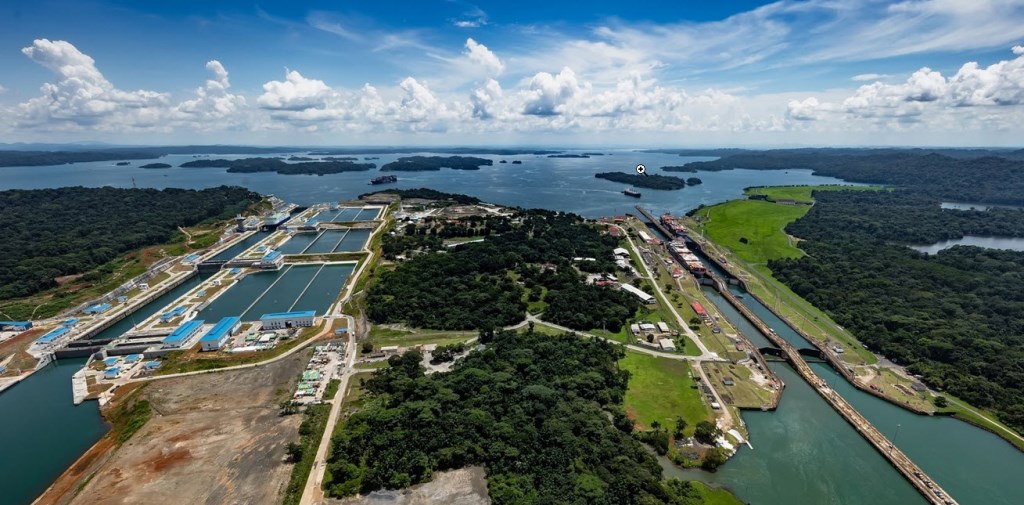A five-month drought in Panama has reduced freight carrying capacity of the country’s canal of ocean carriers by nearly one-fifth. It’s also giving an unseasonal boost to shipping rates for U.S. East Coast-bound cargo.
Starting next week, the Panama Canal Authority will reduce the maximum allowable draft for the largest of ships that use the Neopanamax locks to 43 feet. Ships moving on the older set of smaller Panamax locks will have a maximum allowable draft of 38.5 feet.
The draft restrictions are the sixth that the Authority has had to put in place since the beginning of this year. It comes as rainfall in the Panama Canal Watershed was 90 percent below its historical levels during December 2018, according to Carlos Vargas, Vice President of Environment and Water for the canal.
The lower rainfall reduces the water levels on the Gatun and Madden Lakes, which ships transit from one side of the canal to the other.
The lower draft means limits on the amount of heavy freight that container ships can move through the canal, according to a U.S.-based manager for an Asia-based container shipping company, who spoke on condition of anonymity.
Forty-foot marine containers typically carry between 10 metric tons to 12 metric tons of freight.
But the draft restrictions mean carriers want containers only loaded with between eight and 10 metric tons of freight.
He says major shippers are aware of the issue and are planning to pack less freight into containers at origin. The Panama Canal Authority issues notices to shipping lines at least four weeks in advance to prepare for the lighter loads.
“Most shippers that are savvy know the Panama Canal has these issues periodically because of drought and that carriers are looking to go a little lighter,” the manager said.
“We are looking to carry lighter freight, but that doesn’t always happen,” he added. “If it’s something we can influence, we will.”
The seasonality of those draft restrictions is reflected in the Freightos Baltic Index Panama Spread (FBX.PANA), which measures the difference between ocean freight rates for the North American East Coast and West Coast. The first quarter typically spikes as capacity is reduced due to Panama’s dry season.

But with draft restrictions extending into June, the Panama Spread is widening even later in the year. It reached $1,376 per forty-foot equivalent unit (FEU) as of mid-May, the highest since January 2018.
Some forecasts suggest that the dry season could last until mid-summer. But Vargas said the Authority is taking steps to slow further capacity decreases through the canal.
It may use water-saving basins, which can recycle 60 percent of the water used when filling and draining the canal’s locks.
It may also close hydropower station that uses Gatun lake water flows. The Authority is also looking at tandem lockages, where two ships use on lock at the same time, and chamber cross-filling operations.
